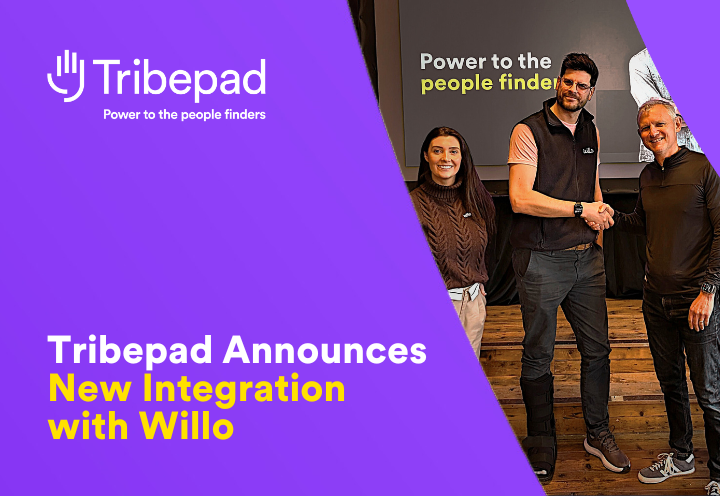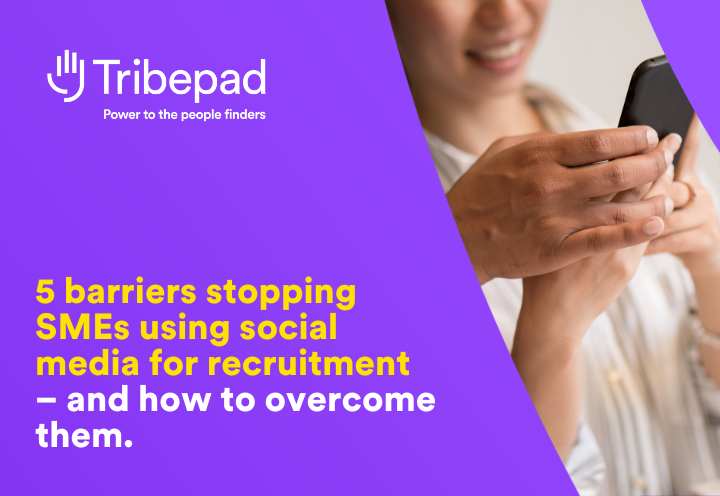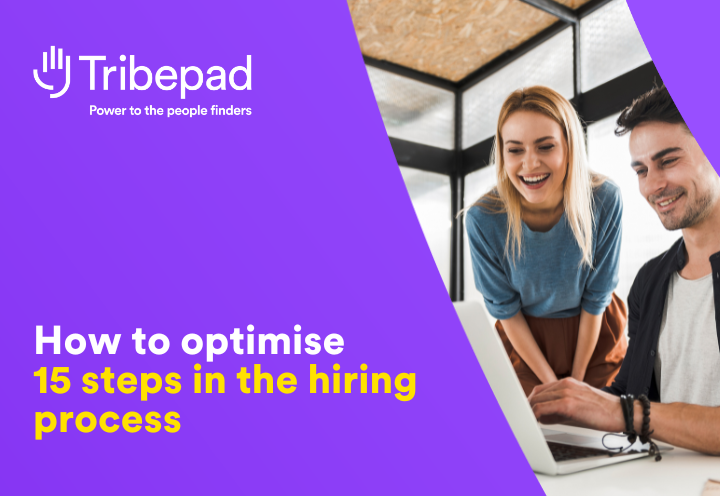Applicant tracking spreadsheets have their place. But that place is usually much smaller and much earlier in businesses’ growth journey than most teams realise. Keep reading for the six biggest weaknesses of relying on spreadsheets for recruitment – and what that means for your hiring.
For SMEs, spreadsheets are a brilliant thing. They’re a free, accessible tool that practically everyone knows how to use, that can sub for lots of expensive specialist pieces of kit while you’re scaling.
But they have big limitations too.
They’re just not designed for recruitment. Even those endless online excel templates are making the best of an imperfect situation. They don’t easily support specific recruitment processes, and they aren’t tailor-made to overcome your specific hiring challenges or accommodate common hiring needs.
Spreadsheet recruitment can be fine, to a point. But that point is usually sooner than you think.
Losing someone fantastic hurts whether you’re hiring 30 people or 3000 – arguably more for smaller organisations. And paying for 10x the recruitment time for repetitive admin is pretty unaffordable whatever your size. Again, arguably more for smaller organisations with less budget leeway.
Let’s look at the six biggest limitations of applicant tracking spreadsheets, and how they might impact growing SMEs.
6 limitations of applicant tracking spreadsheets
Spreadsheets are great for what they’re great for. But honestly, past a certain point, they’re really not great for recruitment. Here are some of their biggest issues, and what that starts to mean for growing organisations talent acquisition.
1 – Spreadsheets make collaboration hard
This is an enormous limitation of old-school recruiting excel templates, because version control becomes an absolute nightmare.
- Who’s working into what?
- Who’s got the latest version?
- Didn’t Jenny make changes last week?!
- WHY can nobody find them?!?
Cloud-based spreadsheets are marginally better because at least there’s a single source of truth. But not much.
Applicant tracking spreadsheets typically turn into an unintuitive, sprawling beast that only the original creator understands or knows how to navigate. If you’re lucky.
The problem is, this leads to big inefficiencies and poor collaboration. Everything starts to take way too long. Which is why one of the most common recruitment challenge for SMEs and growing businesses is slow time-to-hire.
You might only have an intuitive sense that your time-to-hire is too slow because you probably lack data to prove it. The main symptom you will notice is your best candidates going elsewhere.
When you’re *almost* ready to make someone an offer, and the whole team’s thrilled, and then… tumbleweed. That person’s accepted an offer somewhere else, often a major talent competitor.
It’s an awful feeling. Like telling someone you love them and getting ‘thank you’ in reply. If this keeps happening to you, maybe the problem isn’t them, it’s you… and your spreadsheets.
Recruitment software can literally save you hours and hours each day, with lots of sensible automation, workflows, templates, progress boards, and a great candidate database. So the people you love, love you back.
2 – Spreadsheets are hard to search
We’ve all had that experience. You know you know someone great, but you just can’t quite remember who. The name’s right there on the tip of your tongue but… no. It’s gone.
- Did they email you?
- Were they an applicant for a past role?
- Did you speak to them at that careers fair?
Argh! Is anything more frustrating? We’ve all been there but if ‘occasionally ‘ becomes ‘often’, it’s a good sign you’re outgrowing spreadsheets.
Spreadsheets are great repositories for information but they’re notoriously hard to search. If you want to move beyond storage (and memory) it could be time for recruitment software.
The heart of an ATS is a robust candidate database that makes searching your past candidates easy.
3 – Spreadsheets don’t handle candidate comms
Spreadsheets store. They don’t real-time track so you can easily see who’s where and needs contacting. And even if you’ve got a great process for keeping on top of candidate comms, spreadsheets mean communication is manual.
That’s fine, to a point. When you’re hiring, say, twenty people annually, you probably find it pretty easy to keep track of candidates. (Unless you recruit for high volume roles).
For those twenty roles, you might get… 50 applications. That’d put you at 1000 applicants annually. A lot, but again, probably manageable.
But there’s a definite point where growth starts to become exponential, and you teeter ever-closer to losing total control over your recruitment ecosystem.
- Suddenly, you’re not getting back to every applicant – you’re only getting back to people you want to complete an assessment.
- And then you’re not getting back to everyone who completes an assessment – only to candidates you want to interview.
- And then you’re not even getting back to candidates you’ve interviewed, unless they were successful.
- And so on. Until your employer brand is shot to pieces and nobody’ll go near you with a barge pole.
If that’s starting to happen, it’s a good move to migrate to recruitment software before your candidate experience gets even worse. Recruitment software for small businesses makes keeping candidates updated super simple. You’ll think about it less but do it more.
| Our #EndGhosting research 2023 found that 43% of UK jobseekers have been ghosted and 87% are negatively emotionally affected. A good ATS is the answer. |
4 – Spreadsheets prohibit proactive recruitment
Almost every business is struggling with hard-to-fill roles at the moment, from scale-ups to the world’s biggest enterprises. One of the best antidotes to skills shortages and hard-to-hire roles is a shift towards proactive talent pooling.
A talent pool is a collection of candidates grouped by similar characteristics, who could be suitable for future jobs. Talent pools give you a ready-to-go pool of warm, qualified talent. Often talent you’ve got a privileged relationship with.
Great stuff. But talent pooling isn’t really feasible with spreadsheets. It is, technically. But it’s inefficient, much less effective, extremely time-consuming and all in all, creates as many problems as it solves.
If you regularly struggle to hire certain roles, or if you know you’re in a shortage industry, talent pooling could make sense for you. And if that’s the case, you’ll realistically want to consider talent tech that makes it simple.
5 – Spreadsheets make reporting near-impossible
How often does your CEO ask you stuff about recruitment? Like, “Hey, Karin, what was our time-to-hire last month?” Or “Hiya Jon, tell me: what proportion of our applicants come from LinkedIn – is it worth investing in Sales Navigator?”.
If those are the sorts of questions you’re starting to get, you’ll struggle to meet exec expectations without talent tech. Spreadsheets just aren’t designed to find that information. It takes herculean data wrangling skills and lots of hours that’d be better spent elsewhere.
On the other hand, the right talent tech makes recruitment reporting super simple.
(This was the major driver for Lucion Services’ Katie Cooper to look at recruitment tech, as she told Recruiting Brainfood’s Hung Lee in the second session of our four-part webinar series. Catch-up with the webinar here or read the write-up.)
6 – Spreadsheets stall growth
Maybe you’re reading this thinking, ‘hmmm, sort of. Maybe. Sometimes.’ And that’s fine – lots of smaller businesses can paddle in this middle-ground space for a while. But when it’s not fine is if you’ve got rapid growth round the corner.
All the negatives of spreadsheets are magnified as the business grows, as expectations on recruitment grow. Recruiters need faster collaboration, easier searching, more automation, more proactive attraction strategies and better reporting – not worse, worse, and worse.
Plus, there’s the whole implementation shebang to consider. Vendors should make migrating to recruitment software pretty painless – but change is never completely painless. Businesses are the ultimate change-o-phobes.
If you’re growing, there’ll never be a good time to implement new tech, however nearly-painless-and-definitely-better-long-term it is. BUT there are better times and worse times. And tomorrow is a worse time than today, if you’re planning to get bigger.
Most growing businesses don’t upgrade to recruitment tech when they should. They dither, so then there’s a period where everything gets super chaotic then grinds to a halt while they switch over. Swapping to recruitment software before you reach that tipping point is always a good thing.
Is it time to swap spreadsheets for software?
Applicant tracking spreadsheets are many growing organisations’ dirty little not-so-secret. You’d be shocked at how big some companies get and are still struggling against the tide to do things manually. But life could be MILES easier.
We get that investment is super hard to justify. But there comes a point that using spreadsheets is actually costing you more than investing into software, because your recruiters are so desperately inefficient. And that’s before you consider the costs if the organisation can’t grow as planned.
In a recruitment environment that’s endlessly difficult for everyone and shows few signs of changing, building a fast, engaging, efficient, and fair recruitment process is a competitive edge worth thinking hard about.
Tribepad Gro is ready built, ready-to-go recruitment software for growing teams. Take your recruitment to the next level. Get your free recruitment diagnostic session with Tribepad consultants Dan and Hayley to learn what could be stalling your growth.




